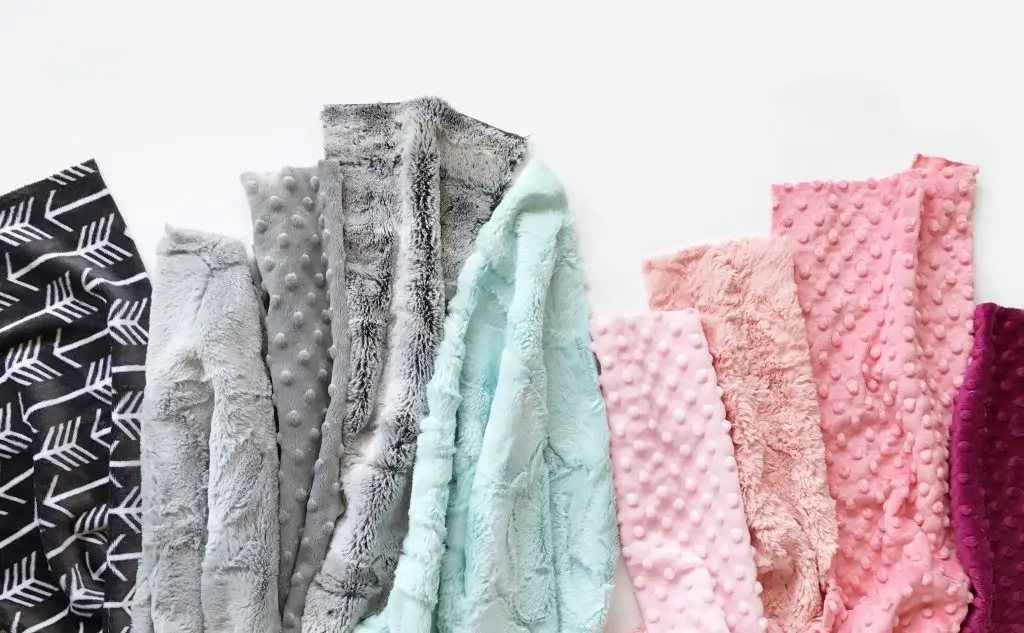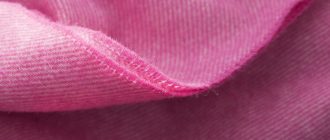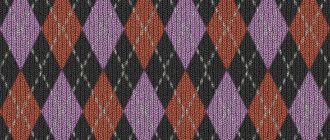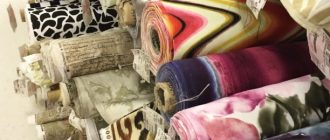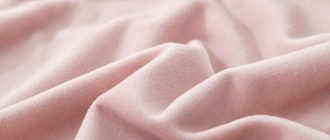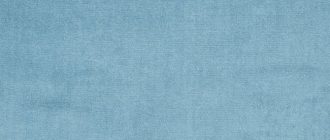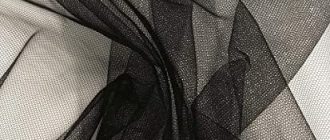Fluffy, soft, and irresistibly snuggly – minky fabric has charmed into sewing rooms and craft corners across America. Known for its plush, velvet-like pile that resembles mink fur, the cuddly fabric has spawned a full-blown “minky mania” over the past few years.
Run your fingers slowly across the plush surface, taking in the luxurious texture. Press deeper into the super-soft pile, feeling it warmly embrace your skin.
This heavenly sensation comes from a fabric now known worldwide—minky. Over the past decade, minky fabric has exploded from a nursery secret to an international sewing and crafting phenomenon.
Once a niche material favored by high-end bedding designers, minky fabric can now be found in everything from hooded blankets to children’s clothes to handmade stuffed animals. Even major retailers like JoAnn have expanded their minky offerings to keep up with sewers’ voracious demand.
But what exactly is minky, and what makes it so popular for crafty DIY-ers? Let’s unravel the story behind the minky phenomenon that has taken the sewing world by storm.
Minky Fabric History & Background
Minky fabric traces its origins to France in the late 20th century when textile mills developed faux fur to simulate the soft feel of mink coats.
These plush “minky” piles soon caught the attention of American fabric importer Shannon Fabrics. 2002 Shannon Fabrics launched its Cuddle line – one of the first minky fabric collections marketed to home décor crafters and sewists.
Thanks to online craft communities like Etsy, minky fabric started gaining momentum in quilting and sewing circles in the early 2000s.
Small startups emerged to meet demand, cementing minky as a niche fabric for baby blankets, plushies, and more. When the COVID-19 pandemic hit, crafters turned to hobbies like sewing, and minky fabric benefitted from the boom.
Shannon Fabric’s Cuddle Minky remains one of the most ubiquitous brands today. But scores of minky fabric brokers and sellers now cater to the minky-hungry masses.
Popular retailers like JOANN Fabrics offer over 150 types of minky fabric, with new patterns and colors debuting each season.
| Image | Buy | Title |
|---|---|---|
 Top
Top | Buy on Amazon | Ice Fabrics Solid Minky Fabric by The Yard - Soft, Smooth and Luxury 58/60" Extra Wide Red Minky Fabric for Blankets, Apparel, Baby Accessories, Throws, Pillows & More - Red - 1 Yard |
 Top
Top | Buy on Amazon | Minky MINKEE Chenille DOT Soft Fabric Cuddle 38 Color 60"W SEW Craft by The Yard (Pink) |
 Top
Top | Buy on Amazon | Barcelonetta | Minky Fabric | Plush, Super Soft, Cuddle Fabric | Solid Minky | by The Yard | 60" Wide | Baby Blanket, Change Station Cover, Pillow, Scarf, Beanie (White, 1 Yard) |
 Top
Top | Buy on Amazon | Stretch Mochi Plush Minky Fabric Hug-Z™ by The Yard DIY Baby Blankets Decor Clothing Snuggle (Turquoise) |
 Top
Top | Buy on Amazon | Short Pile Plush Fabric for Sewing/Minky for plushies & Many More ✦ 39.5x29.5 inch ✦ Pile Length 1/16 inch (1.5 mm) ✦ Silver Grey |
 Top
Top | Buy on Amazon | Valentina Textile Inc Snuggle Dots Minky 60 Inch- Fabric by The Yard(1 Yard, Sage) |
 Top
Top | Buy on Amazon | PHF Minky Baby Blanket for Boys and Girls, 40x50 Inches Neutral Double Layer Baby Blankets with Dotted Backing, Unisex Receiving Blanket Bed Throws for Newborn, Infant, Babies, Woodland&Animal |
 Top
Top | Buy on Amazon | Minky Dimple Dot Blanket Fabric 60" Wide Sold by The Yard (Light Pink) |
As Amazon Associates, we may earn from qualifying purchases.
Properties & Types
So, what gives Minky its signature softness? The plush feel comes from longer fibers woven into the back of the fabric. When brushed, these fibers rise to the surface, forming a thick pile not unlike corduroy or velvet.
But minky’s fibers remain uncut, resulting in a smoother finish. The fibers also provide insulation, making minky popular for blankets and winter wear.
Minky fabric comes in various weights and pile depths to suit different projects. Lightweight minky works well for clothing and accessories, while ultra-plush minky is favored for plush toys and pillows. Solid minky offers versatile, subtle elegance, while printed minky provides whimsical flair with colorful motifs.
Basic minky works well for beginners, but the pricier, high-quality “luxury” minky varieties have richer colors and softer textures for discerning crafters. Then there’s anti-pill “cuddle minky” and sheared “dimple minky” sporting a dotted texture.
Minky backed with waterproof laminate or cotton jersey offers even more possibilities! The options grow as fabric brands innovate unique minky blends to feed sewers’ creativity.
Popularity Surge
Minky fabric was already gaining mainstream popularity before 2020. But COVID lockdowns and crafting boom further heightened demand as homebound hobbyists started sewing projects like minky blankets. Youth influencers then popularized minky clothes and plushies, enticing younger crowds.
Facebook sewing groups like “All Things Minky” connect over 3,800 members, sharing tips, patterns, and minky musings. Small business owners have also sprouted on Etsy, selling custom minky items from pacifier clips to pet beds.
For the uninitiated, working with minky fabric does pose challenges beyond its high price tag. The fabric’s stretchy texture resists pins, and shifting grainlines can distort projects. Yet devoted “minkyphiles” cannot resist the fabric’s tactile allure and endless DIY possibilities.
Major retailers are also waking up to minky’s profit potential. JOANN Fabrics stocks its shelves with trendy fabric.
Competitor Hobby Lobby launched its Cozy Minky line, while Walmart now sells minky blankets under its Secret Treasures brand. As minky mania continues, crafters wonder what cuddly variations fabric brands will conjure up next.
The Pleasures and Pains of Minky Fabric
Minky fabric opens up a world of snuggly DIY potential, but the material does have its divisive qualities. Beyond the fabric’s undisputed softness lies a more complicated reality for crafters. Here’s a balanced look at some of the notable pros and cons of working with minky fabric:
Pro: Cozy Softness
The #1 benefit sewing enthusiasts tout is Minky’s irresistible plush pile that resembles velvet or mink fur. Brushed fibers create air pockets that provide comforting warmth and weight for blankets, clothes, and stuffed animals. Minky satisfies crafters seeking that perfect huggable textile.
Con: Tricky Texture
However, minky’s delicate brushed fibers have a mind of their own, stretching and distorting knit and woven projects if not handled properly. The fabric continuously shifts out of place, challenging even experienced sewers. Pins and needles struggle for purchase while slippage abounds at the cutting table. Patience is a virtue!
Pro: Customization Options
An array of minky styles suit any project needs – from apparel weights to ultra-plush fabrics over 1/2 inch thick. Solids and prints, textures like “Cuddle” and “Luxe,” and backing choices like jersey or laminate allow for customization. For versatility, it’s hard to beat minky.
Con: Special Tools Required
While minky offers variety, working with the fabric often demands specialty notions to tame its unruly texture successfully. Minky veterans recommend stabilizers, fabric glue, clips, silk pins, or even a dedicated serger to maneuver the fabric without frustration. Novices may find the learning curve steep.
Pro: Sewing Inspiration Galore
Minky’s popularity has spawned a thriving community with patterns and tutorials for clothing, stuffed toys, home decor items, and more. Connecting with this supportive group unlocks fresh project ideas and guidance tailored to the fabric. Thanks to this abundance of resources, Minky may unexpectedly boost creativity and skills.
Con: Care Requirements
Yet even after finishing a minky creation, the fabric still requires extra care. Low heat drying, air drying, and fabric shavers help preserve minky’s delicate brushed nap over time.
Accidental pilling or matting can quickly wreck all of one’s hard work. Minky rewards gentleness and attention during upkeep.
For devoted “minkyphiles,” the fabric’s advantages clearly outweigh its trickier aspects. As long as crafters approach minky fabric knowing what to expect, they can fully enjoy the fabric’s snuggly satisfaction.
It’s no surprise why minky has inspired such devotion among sewing enthusiasts seeking its comforting charms.
Tips for Working with Minky
Yet, as any minky maven will warn, the fabric demands special handling. Minky’s soft texture resists pins and shifts out of place while cutting and sewing. But a few essential tools and tricks of the trade can tame the fabric’s delicate nature.
Securing minky layers with pattern weights or fabric glue prevents frustrating slippage at the cutting table. Many sewists like wash-away Wonder Tape or quilter’s safety pins around tricky edges. Walking foot attachments allow both sides of minky fabric to move at the same rate as you sew, preventing tunneling in the pile.
Finished minky items also require a gentler approach when cleaning. Tumbling and high-heat dryers can mat the fibers, so air drying is best. Using a fabric shaver/diffuser restores manky’s plushness between washes by shearing off the pilled fuzz. With the proper precautions, minky’s softness can be enjoyed for years.
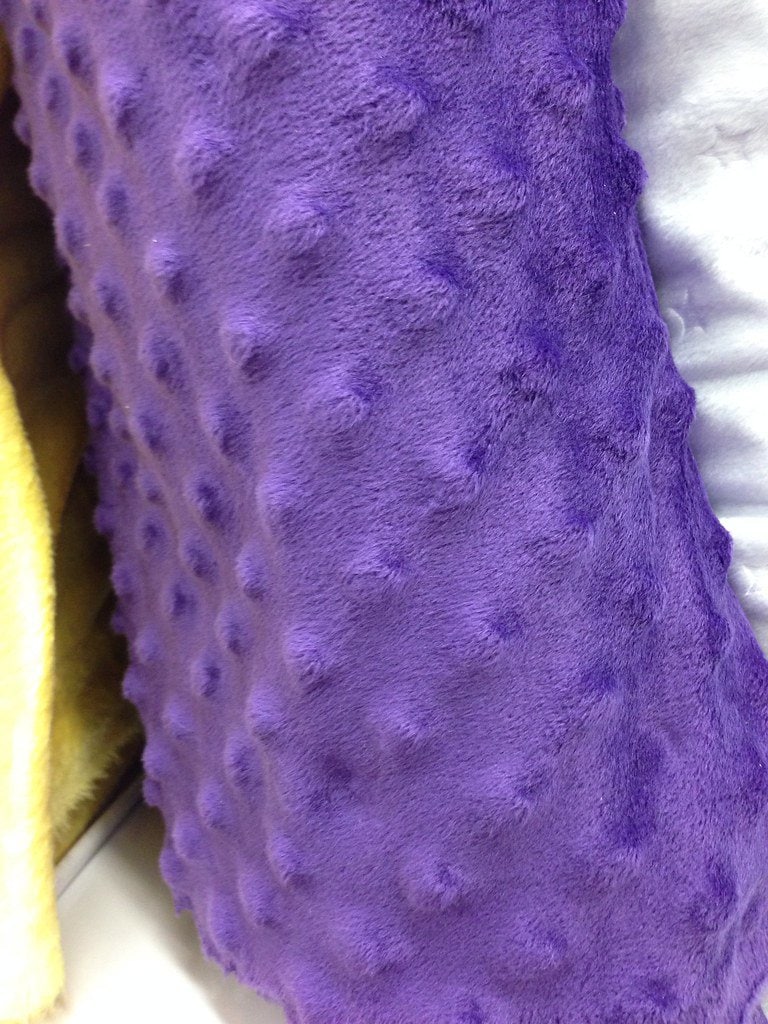
Keeping Minky Fabulous – Proper Care and Cleaning
Minky fabric’s brushed fibers bestow snuggly softness but also delicate care requirements. With some prudent precautions, crafters can help minky creations retain their fabulously plush texture for years. Follow this fundamental guidance on washing, drying, storage, and restoring the minky’s fur-like pile.
Handle finished minky items gently and store them flattened to prevent pilling and permanent creases. Check garment tags before cleaning—some minky may be dry clean only.
For a washable minky, turn items inside out first. Wash on the delicate cycle in cold water using a gentle detergent. Avoid overloading the machine, which can irritate minky’s nap.
Skip the dryer, which risks heat damage, shrinkage, and irreversible matting. Always air dry minky flat on a towel or drying rack, reshaping seams or piles while still slightly damp. Maintain the fluffy texture by brushing the pile with a soft baby hairbrush.
If pilling occurs from friction, use a fabric shaver/defuzzer in a gentle setting. Shave evenly across small sections, brushing afterward to restore the loft. Take care not to remove too much pile. Check frequently for snags, stopping to cut loose threads.
With some mindfulness, minky’s heavenly softness can withstand repeated washing and wear over time. Show this high-maintenance fabric some TLC, and crafters’ cherished minky items will continue providing years of cozy comfort.
Future Outlook
Like a comforting hug, minky retains a devoted fan base even as trendy fabrics come and go. Major brands continue releasing unique minky blends, prints, and textures each year to stimulate consumer desire and refresh product lines. Small business owners find fertile ground on Etsy and craft fairs with minky pillows, clothes, and accessories.
While skeptics may dismiss minky mania as another passing fad, seasoned sewists recognize minky’s long-lasting appeal and possibilities.
The fabric lends creativity to sewing, quilt making, and toy design while serving functional needs for blankets, winter wear, and baby items. Both novice and expert crafters delight in unleashing their imaginations with minky’s unparalleled softness.
As makers continue sharing their minky exploits online, the fabric builds grassroots hype beyond marketing gimmicks. Thanks to these influencers and retailers catering to their whims, the minky phenomenon seems more likely to grow rather than fade away soon.
FAQ
-
What is minky fabric?
Minky fabric is a luxurious type of fabric that is made from 100% polyester. It is known for its softness, warmth, and plush texture, resembling mink fur, hence the name “minky.” This fabric is often used for making baby blankets, clothing, and accessories due to its soft and thick nature, providing comfort and coziness.
The fabric is hypoallergenic, making it suitable for babies, and it comes in various weights, pile heights, and patterns, allowing for a wide range of uses and creative projects. Minky fabric is also durable and stain-resistant, maintaining its color and warmth over time.
Minky fabric is available in different styles, such as plain, dot, ribbon, and print minky, each with its unique texture or pattern. For example, dot minky has small dots that add texture, while ribbon minky features ridges similar to corduroy.
Despite its many advantages, minky fabric is not as breathable as natural fabrics, which should be considered when creating items for certain climates or purposes. It is also important to note that while sewing with minky fabric, it can produce a lot of fuzz, and it tends to stretch, so it’s recommended to use plenty of pins and clips to manage the fabric during the sewing process.
-
What types of minky fabric exist?
Minky fabric comes in various types, each with its unique texture and pattern. Here are some of the common kinds of minky fabric:
Smooth Minky: This type has a seamless, untextured surface, providing a soft and uniform feel.
Minky Dot: Features raised dots in a pattern across the surface, adding a subtle texture to the fabric.
Minky Rose Swirl: Characterized by long fibers swirled into a rose-like pattern, adding visual and tactile texture.
Sherpa Minky: Resembles Sherpa fleece and is often used as linings for warm apparel or accessories due to its softness and warmth.
Minky Stripe: Has a long pile that mimics the look of luxurious animal fur.
Minky Animal Prints: Various animal fur-based designs offer stylish patterns and a soft and luxurious feel.
Ultra Plush: Features longer cut minky threads for a fluffy feel and extremely plush look.
Extra Plush: Has medium-length cut threads for a fluffy and cozy feel while still feeling silky and smooth.
Midweight: Consists of flat, short-cut threads, giving the blanket a soft texture.
Print: The threads on print/patterned blankets are cut short and flat, providing a silky smooth texture.These different types of minky fabric cater to various preferences in terms of softness, warmth, and design, making minky a versatile choice for blankets, clothing, and other cozy items.
-
Does minky fabric shrink?
Minky fabric made from 100% polyester does not shrink when washed. Polyester is a synthetic fiber known for its ability to maintain shape and resist shrinking. Therefore, when you wash minky fabric, you can expect it to retain its original size and appearance without the risk of shrinkage.
However, it is sensitive to heat, so it’s important to avoid ironing minky fabric or exposing it to high temperatures in the dryer, as this could damage the fabric. When drying minky fabric, using low heat or hanging it dry is recommended to keep the fabric in its original condition.
-
What is minky made of?
Minky fabric is made from 100% polyester fibers. These fibers are knitted into fabrics of varying weights and pile heights to create the soft and plush texture that minky is known for.
The polyester material ensures that minky fabric is durable, hypoallergenic, and resistant to stains and wrinkles. It also maintains its color and warmth over time, making it a popular choice for baby blankets, clothing, and accessories.
-
Is minky fabric safe for babies?
Yes, minky fabric is considered safe for babies. It is made from 100% polyester, a hypoallergenic material, which is unlikely to cause allergic reactions. The fabric’s softness and plush texture make it comfortable and soothing for infants, so it is commonly used for baby blankets, clothing, and accessories.
However, as with any fabric used for babies, it is important to ensure that loose threads, buttons, or other small parts are securely attached to prevent choking hazards.
Additionally, when using minky fabric or any blanket with a baby, it is crucial to follow safe sleep guidelines to avoid risks such as suffocation or overheating. Always supervise babies using blankets or fabric items and consult with pediatricians for personalized advice on safe baby products.
-
What are some popular uses for minky fabric?
Minky fabric is a versatile material that finds a wide range of applications due to its softness, warmth, and durability. Here are some popular uses for minky fabric:
Baby Items: Minky fabric is commonly used to make baby blankets, clothing, bibs, and soft toys due to its gentle feel and hypoallergenic properties.
Home Decor: It can be used for creating throw pillows, couch covers, and blankets to add a cozy and luxurious touch to home decor projects.
Apparel: Minky fabric is suitable for crafting warm clothing items like jackets, scarves, hats, mittens, vests, and slippers, providing comfort and style.
Accessories: It is ideal for making items like purses, wallets, and bags due to its softness and attractive texture.
Crafts: Minky fabric can be used for various crafting projects such as teddy bears, scarves, pillows, quilts, and even weighted blankets.
Outerwear Lining: It serves as a fun alternative lining in outerwear like coats and jackets, adding a unique touch to winter garments.
Gifts: Minky fabric can be used to create personalized gifts like blankets or jackets for adults or children due to its softness and warmth.
Animal Toys: The fabric’s soft texture suits it for making children’s stuffed animals or plush toys.
Car Seat Covers: Minky fabric can also be used to create cozy and stylish car seat covers for added comfort during travel.
Domestic Items: It is perfect for household items like throws, pillows, blankets, and quilt backings due to its softness and warmth.Minky fabric’s versatility and luxurious feel make it a popular choice for a wide range of projects catering to both practical needs and creative endeavors.
FAQ
Main minky fabric colors
- green
- black
- white
- grey
- red
- blue
- purple
- yellow
- pink
Main minky fabric brands
- Fabric Merchants
- Ambesonne
- APC Fabrics
- ben textiles inc.
- Robert Kaufman
- eLuxurySupply
- Michael Miller
- TELIO
- Cotton + Steel
- Spoonflower
- Lunarable
- SanVera17
- Sophia-Art

